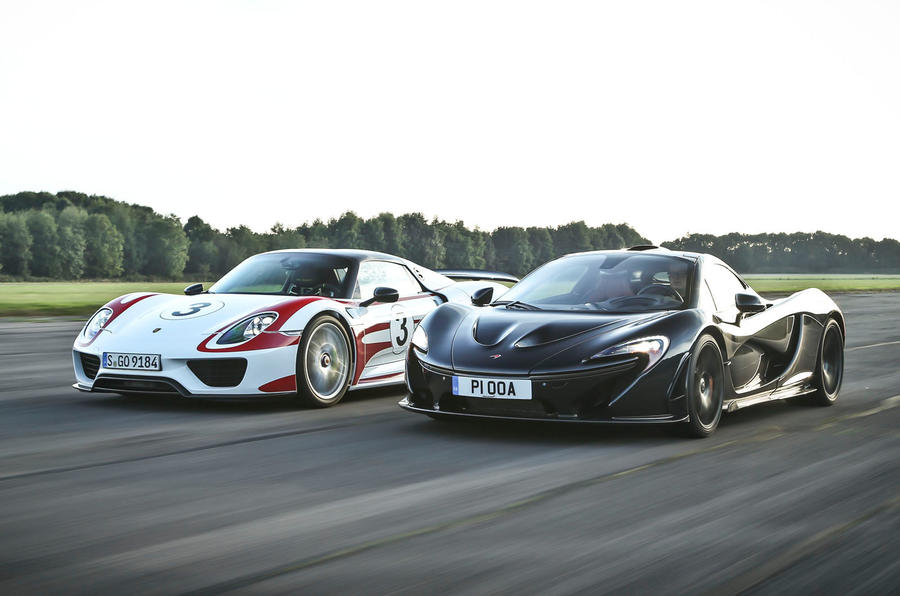Scary-looking cars, the McLaren P1 and Porsche 918 Spyder. Especially when they’re lined up beside one another, V8 engines percolating, heat soak wafting out of their many portals, providing anyone who comes near them with a clear and acutely physical indication of how much energy they contain within.
Together, they produce almost 1800bhp. Their collective top speed is 431mph. When either – or, better still, both – of their combustion engines are running, the ground beneath your feet begins to oscillate. And yet both cars are also quite extraordinarily beautiful and highly relevant machines to look at and to drink in, albeit for distinctly separate reasons.
The P1 appears more complex visually, especially around its rump, which looks as if it could ingest a grown human being whole without anyone really noticing.
The 918 seems purer and simpler by contrast, despite the garish stripes that adorn the bodywork of this lightweight Weissach Pack version of the car. It has wings and ducts and huge 21-inch rear wheels, yes, but beside the P1 it looks less furious and more fluid. It also looks instantly and unmistakably a Porsche.
The P1 is the more expensive of the pair, at £866,000. McLaren has decreed that it will build just 375 during the next two years, so it’s also the more exclusive. The Porsche, on the other hand, costs a shade over £700,000 in Weissach specification (its actual price is quoted only in euros, at €853,155) and will be more than twice as common as the P1, Porsche intending to build 918 examples over the next two years.
Both are fully paid-up hybrids. The P1’s twin-turbo 3.8-litre V8 and electric motor produce combined outputs of 903bhp and 664lb ft, sent to the rear wheels via a seven-speed dual-clutch automatic gearbox.
The 918 uses a larger but atmospheric 4.6-litre V8 that has genuine competition pedigree and revs higher and harder than the P1’s V8. Unlike the P1, however, the 918 is four-wheel drive, the first and bigger of its two electric motors powering the front axle, the second providing supplementary power to the rear.
Combined, the 918’s quoted outputs are 875bhp and, get this, 944lb ft. So although the Porsche is heavier than the McLaren, at 1634kg versus 1450kg, its torque-to-weight ratio – probably the key figure when it comes to acceleration – is superior.
Like the P1, the 918 uses a seven-speed dual-clutch automatic gearbox and employs a clever torque vectoring system to further increase its traction, not just at corner exit but on entry as well. The 918 also has a limited-slip differential at the back, whereas the P1 does not, McLaren claiming that its car doesn’t need one.














































































































Add your comment
918's long-term engine wear?
So, you jump into your 918 and, being eco-consious, you cruise through the congested metropolis in zero-pollution electric mode. Then, as you hit the motorway's on-ramp a prod of throttle lights up the V8. And boom, that complex (and costly) V8 has gone from stone cold, metal-against-metal, to c. 3000rpm and is now cruising at 80ish - ouch!
In short, going from cold start-up to motorway pace in one fell swoop is not good for medium- to long-term engine life. Or does the 918 have an F1-style system that pre-heats the engine oil before cold start ups? Or is Porsche relying on owners to diligently warm their engines?
Hmm, if the latter, a used 918 could be an expensive timebomb...
Well to be honest......!
Incomplete without the Ferrari
And what if the Ferrari won?